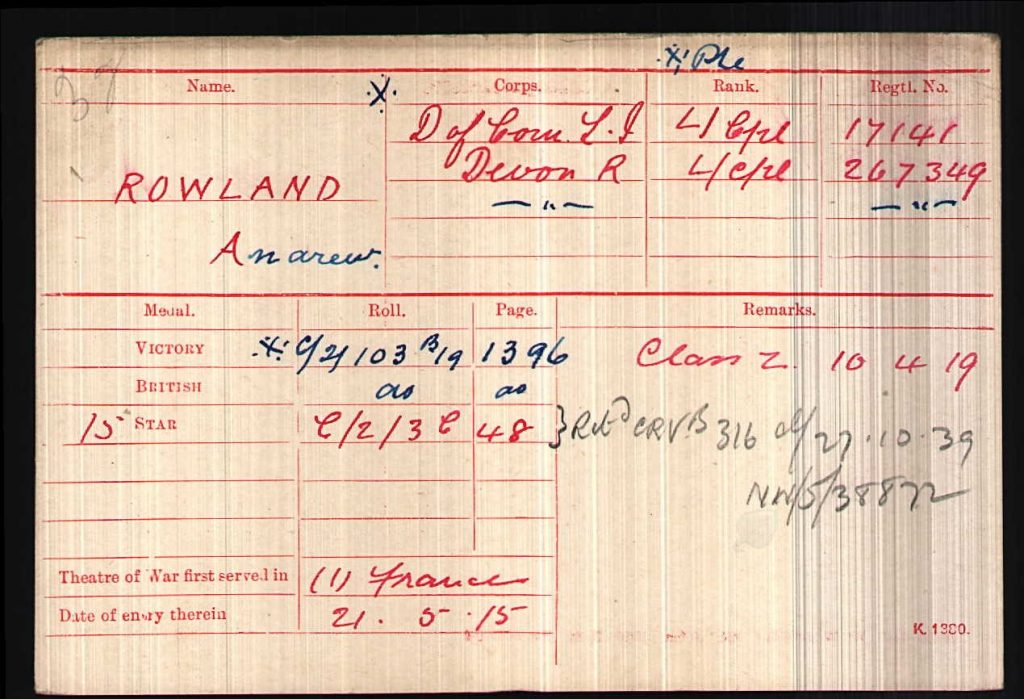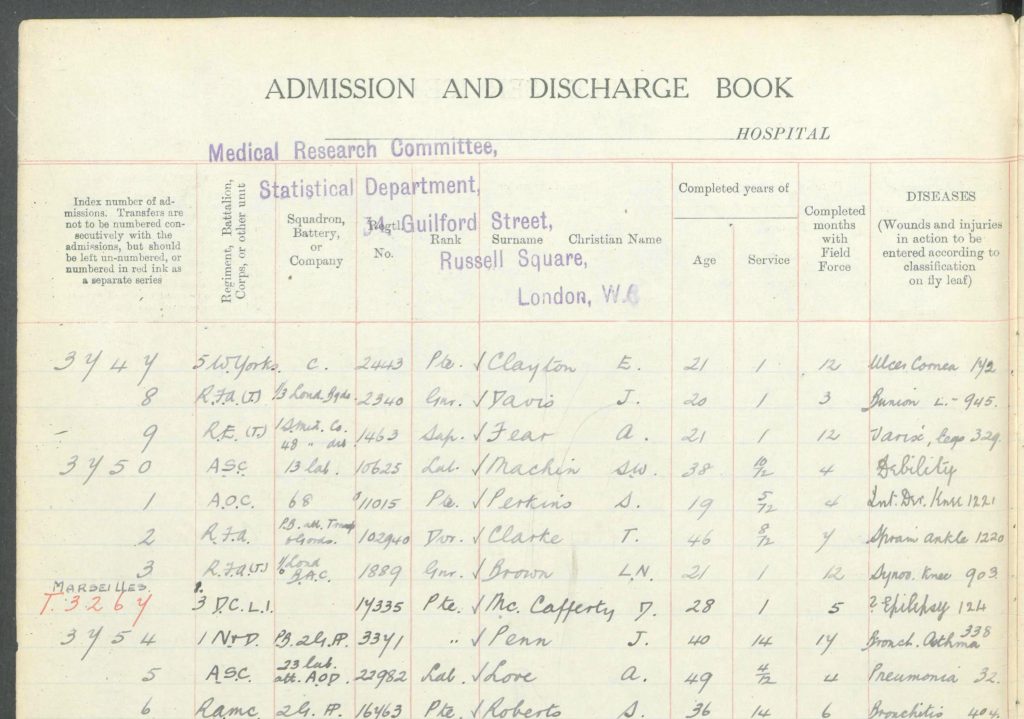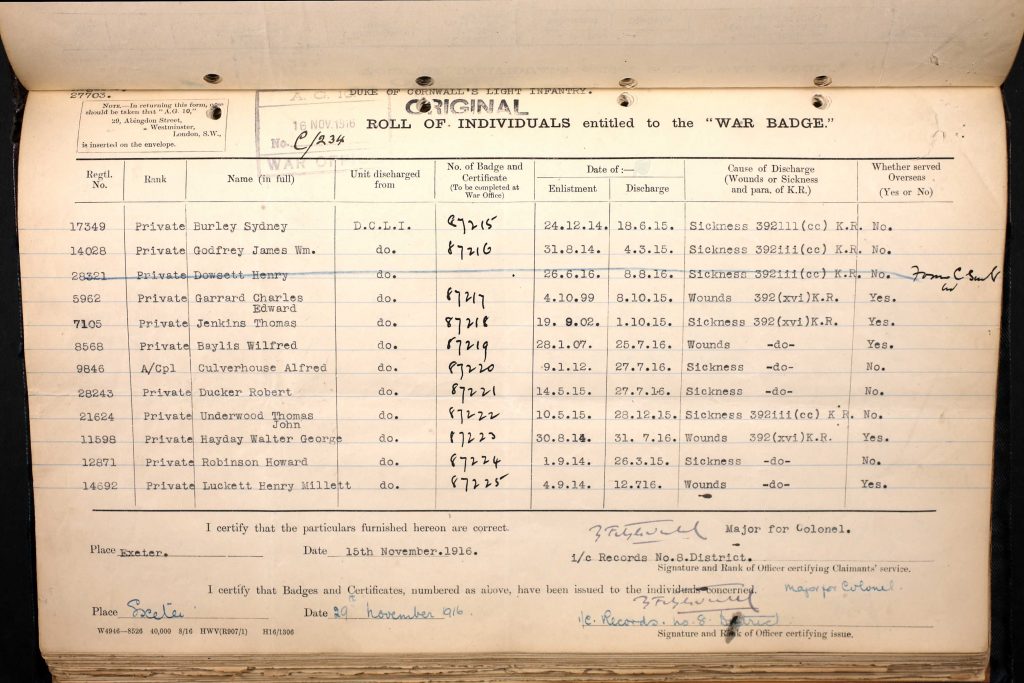DCLI Stories
Andrew Rowland was a Lance Corporal in the 6th Battalion DCLI. He was born in Chelmsford in 1887. He was a decorator and plumber before enlisting at age 27 in 1914. During an attack he was buried by a shell and then crawled 1 ¼ miles to safety. He was evacuated to the 1st London General Hospital in Camberwell and diagnosed with Shell Shock. He suffered from deafness and was unable to speak, but his clinical records show his condition improved.

John MacCafferty was a Private in the 1st, 6th and 3rd Battalions of the DCLI. He was a farm labourer before enlisting in 1914 at age 28. In August 1915 he fell ten feet whilst carrying a bag up a plank, which struck the back of his head. He was admitted to Evington War Hospital in Leicester and diagnosed with Neurasthenia. His medical records state that he had no injuries but appeared depressed. He returned to combat but was later admitted to 2nd General Hospital in 1916 with Epilepsy. Even today Traumatic Brain Injuries (TBIs) which are physical conditions, are often mistaken for psychological conditions.

Walter George Hayday was a Private in the 6th Battalion DCLI. He was born in 1884. He was a trunk finisher by trade before enlisting in 1914 at age 31. He was wounded within 2 months whilst in Ypres and sent to Reading War Hospital. He reported that he received a bayonet wound to his right arm by a comrade who went ‘mad’. It is likely his comrade was suffering from psychological trauma and lashed out at Walter. He was discharged from the Army after being found medically unfit due to his wounds.

